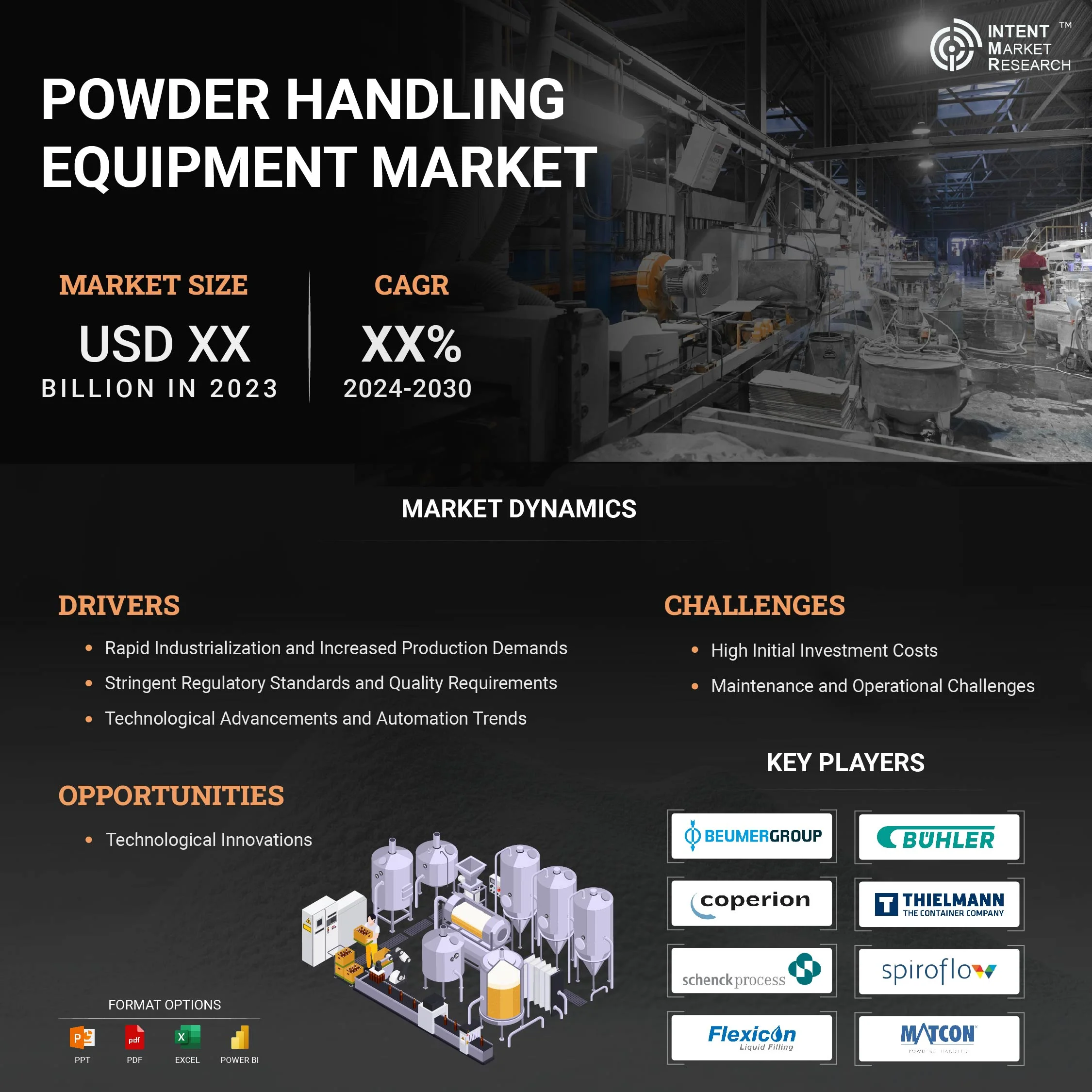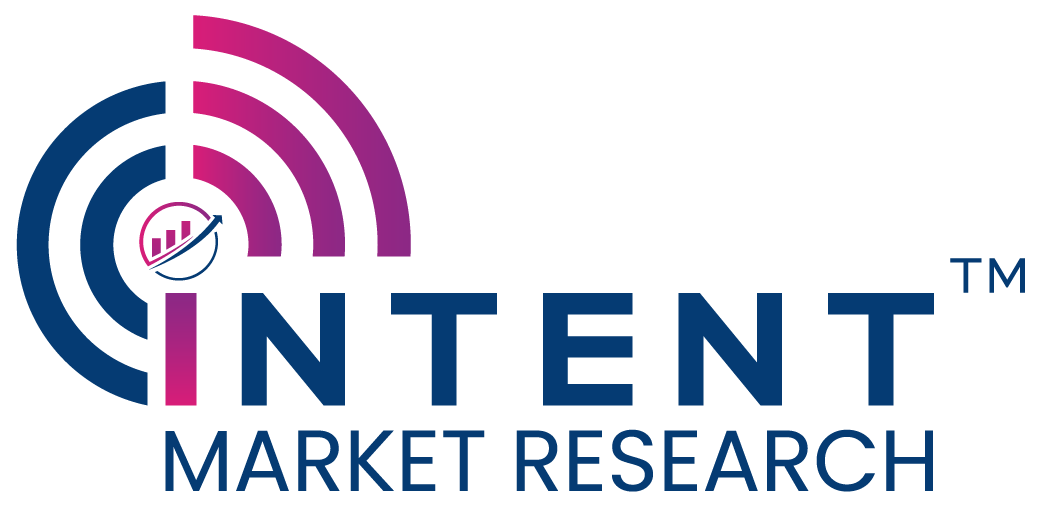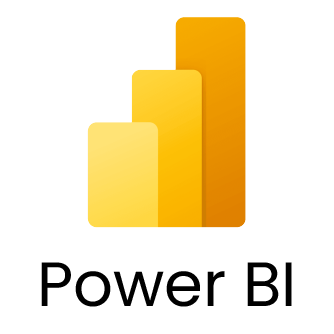Powder Handling Equipment Market
- December, 2023
- Industrial Equipment & Automation
Powder Handling Equipment Market Size Analysis, By Equipment (Vibratory Feeders, Bucket Elevators, Pneumatic Conveying System, Bulk Bag Discharger, Flexible Screw Conveyors, and Powder Induction Mixer Machine), By Industry (Pharmaceuticals, Chemical, and Food & Beverages), By Application (Mixing, Packaging, Size Reduction, Dust Collection, Loading, Refilling, and Sealing) and Geography (North America, Europe, Asia Pacific, Latin America, Middle East and Africa); Growth Trends and Forecasts (2024 - 2030)
As per Intent Market Research, the Powder Handling Market size is expected to grow from USD XX billion in 2023 to USD XX billion by 2030, at a CAGR of XX % during the forecast period (2024-2030).
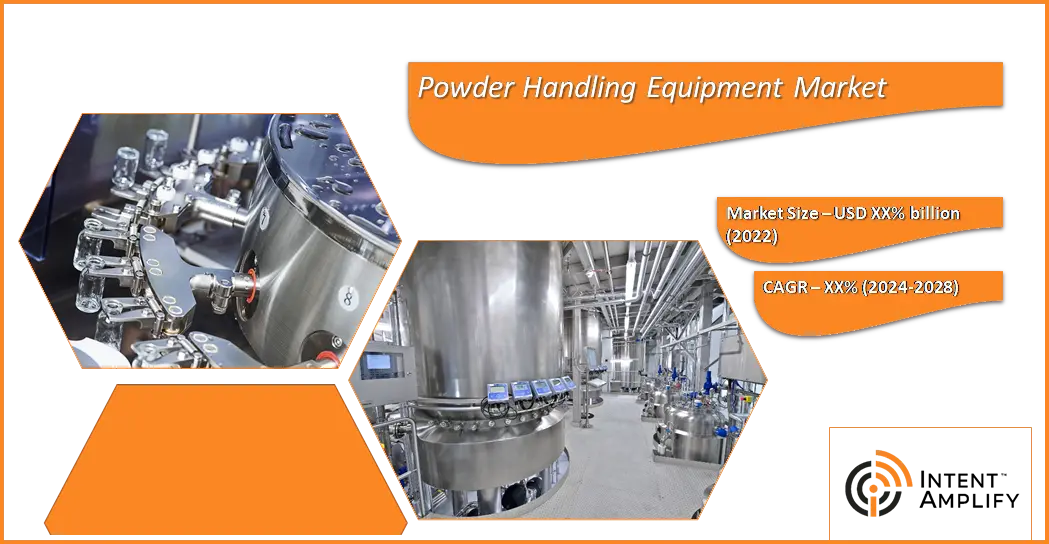
Powder handling equipments are designed to transport and deliver powder materials to various equipment within a processing plant, whether they are raw minerals, pharmaceutical powders, or chemicals. These systems facilitate the movement of materials from filling, and storage to mixing, dosing, discharging, and packaging . The fundamental processing technologies incorporated in these systems encompass a range of operations, including lifting, size reduction, mixing, separating, weighing, and filling. Growing technological advancements and automation trends in powder handling equipment is expected to fuel the growth in the powder handling equipment market. These equipments are designed for efficiency, flexibility and safety.
Innovations in powder handling equipment, such as vibratory feeders, bucket elevators, pneumatic conveying, bulk bag dischargers, and flexible screw conveyors, have been pivotal in streamlining processes. The integration of advanced technologies has led to reduced manual intervention, enhanced accuracy in material control, and improved overall operational performance. Automation has played a crucial role in optimizing powder handling equipment systems. With the implementation of sophisticated control systems and sensors, these systems can now adapt to varying production demands, ensuring a seamless and consistent flow of powders throughout the manufacturing process.
Rapid Industrialization and Increased Production Demand aid towards market growth
The global push towards industrialization, particularly in emerging economies, aids in the demand for powder-handling equipment. A growing need for efficient and automated systems to handle powdered materials and increase production volume is projected to fuel industry growth. The growth of pharmaceuticals, chemicals, and processed food industries and increasing adoption of powder-handling solutions in them is projected to fuel market growth.
Stringent regulatory standards and quality requirements for product quality and safety in pharmaceutical & F&B industry to propel the market growth
Regulatory bodies worldwide are placing a greater emphasis on product quality and safety standards. Increasing regulatory standards and a growing emphasis on product quality and safety drive the adoption of advanced powder handling equipment technologies. Industries such as pharmaceuticals and food must adhere to strict guidelines to ensure the integrity and purity of their products. Powder-handling equipment with features such as containment systems and dust control becomes essential for compliance with these regulations. For instance, in pharmaceutical manufacturing, where even minor deviations can have significant consequences, the adoption of handling powder-handling solutions becomes imperative.
Technological advancements and automation trends are driving the market
The ongoing wave of technological advancements is reshaping industrial processes including the powder handling equipment market. The continuous evolution of technology, including automation and Industry 4.0 initiatives, propels the powder handling equipment market. Advanced sensors, robotics, and data analytics are integrated into modern powder handling equipment, enhancing efficiency, accuracy, and overall process control.
High initial investment costs are hindering the growth of the market
The initial capital required for acquisition and implementation for advanced powder handling equipment is deterrent especially for businesses with budget constraints. One of the significant challenges hindering the widespread adoption of powder handling equipment is the high upfront costs associated with purchasing and implementing advanced systems. Small and medium-sized enterprises (SMEs) find it financially challenging to invest in cutting-edge powder handling equipment technologies, limiting their ability to upgrade their operations.
Maintenance and operational challenges are restraining the market growth
The wear and tear linked to handling diverse powders require regular maintenance, potentially causing operational disruptions. Maintenance activities may result in downtime, affecting overall production efficiency. The demand for skilled personnel to operate and maintain sophisticated powder handling equipment systems presents a challenge.
Powder handling equipment market, by equipment

Powder handling equipment market is segmented into vibratory feeders, bucket elevators, pneumatic conveying, bulk bag dischargers, and flexible screw conveyors equipment’s. The XX market held the majority of the share in 2023. Vibratory feeders are commonly used for feeding and conveying powders in a controlled manner. It contributes to the seamless flow of powders in manufacturing processes, improving overall productivity and reducing waste. Vibrating feeders present numerous advantages, including lowered maintenance expenses, high productivity, and improved material handling capabilities. These attributes position them as the preferred option compared to conventional feeding equipment.
Powder handling equipment market, by application
Powder handling equipment market is segmented based on application into filling, loading, refilling, sealing, packaging, and others. Filling operations are streamlined with powder handling equipment, ensuring accurate and efficient product packaging thereby holding significant share in overall powder handling equipment market.
Powder handling equipment market, by end-use industry
Powder handling equipment market end-use industries, includes pharmaceutical, food, chemical, cement, and others. The pharmaceutical industry holds the largest share in the powder handling equipment market as it highly relies on these systems for accurate dosage and contamination control.
Powder handling equipment market, by region
North American powder handling equipment market is anticipated to register high growth throughout the forecast period. The market growth is attributed to innovative technological development.
The acquisition of smaller players and product innovations by major players are driving the market growth.
The powder handling equipment market is characterized by intense competition due to the presence of numerous international and domestic players. The powder handling equipment market, in particular, is dominated by key players such as THIELMANN, Schenck, Coperion, BEUMER Group, Dematic, Buhler Group, Matcon (IDEX), Spiroflow, and Flexicon. These industry leaders are primarily focused on acquiring smaller players and innovating their product lines to cater to the powder-handling market.
- In April 2023, Tetra Pak introduced powder handling equipment “Tetra Pak Bag Tipping unit SA VS800” which is an automatic bag opening solution that can double the manual processes
- In July 2022, Spiroflow added Cablevey Tubular Drag Conveyors to its portfolio
- In April 2021, ILC Dover introduced a flexible aseptic isolator for the pharma and biopharma industry. It is a cost-effective, closed-barrier system for sterile manufacturing
- In January 2021, Volkmann USA announced the launch of a twin bulk bag unloader (BBU) which is developed to boost powder handling equipment efficiency and save floor space
Table of Contents
- Introduction
- Study Assumptions and Market Definition
- Scope of the Study
- Research Methodology
- Executive Summary
- Market Dynamics
- Market Growth Drivers
- Rapid Industrialization and Increased Production Demands
- Stringent Regulatory Standards for Product Quality and Safety
- Technological Advancements and Automation Trends
- Market Growth Challenges
- High Initial Investment Costs
- Maintenance and Operational Challenges
- Market Growth Opportunities
- Technological Innovations
- Market Growth Drivers
- Overview (Industry Snapshot)
- Powder Handling Market Trends
- Technology and Innovation Landscape
- Impact of Russia-Ukraine Conflict
- Value-Chain Analysis
- Powder Handling Market Opportunity & Funding Analysis
- Pestle Analysis
- Porter’s Five Forces Analysis
- Regulatory Framework
- Supply Chain Analysis
- Industry Ecosystem Analysis (raw material, service provider, vendor, and manufacture others)
- Market Segment Outlook
- Segment Synopsis
- By Equipment Type
- Vibratory Feeders
- Bucket Elevators
- Pneumatic Conveying
- Bulk Bag Discharger
- Flexible Screw Conveyors
- Others
- By Industry Type
- Pharmaceutical
- Food
- Chemical
- Cement
- Others
- By Application
- Filling
- Loading
- Refilling
- Sealing
- Packaging
- Others
- Regional Outlook
- Global Market Synopsis
- North America
- North America Powder Handling Market Outlook
- USA
- USA Powder Handling Market, By Equipment
- USA Powder Handling Market, By Industry Type
- USA Powder Handling Market, By Application
*Note: Cross-segmentation by segments for each country will be covered as shown above.
- Canada
- Europe
- Europe Powder Handling Market Outlook
- Germany
- UK
- France
- Spain
- Italy
- Rest of Europe
- Asia-Pacific
- Asia-Pacific Powder Handling Market Outlook
- China
- India
- Japan
- South Korea
- Australia
- Rest of Asia-Pacific
- Latin America
- Latin America Powder Handling Market Outlook
- Mexico
- Brazil
- Rest of Latin America
- Middle East & Africa
- Middle East & Africa Powder Handling Market Outlook
- Saudi Arabia
- UAE
- Rest of MEA
- Competitive Landscape
- Market Share Analysis
- Volume Output Analysis
- Company Strategy Analysis
- Competitive Matrix
- Company Profiles
- BEUMER Group
- Company Synopsis
- Company Financials
- Product/Service Portfolio
- Recent Developments
- Analyst Perception
- BEUMER Group
*Note: All the companies in the section 9.1 will cover same sub-chapters as above.
- Buhler Group
- Coperion
- Dematic
- Flexicon
- Gericke
- IDEX (Matcon Group)
- Schenck
- THIELMANN
- Vortex Global
We specialize in providing syndicated market research reports that are highly sought after. We can also provide tailored customization to meet unique requirements. Our commitment exceeds limits as we empower clients with tactical and strategic support for well-informed business decisions and consistent success. Our experienced team continuously pushes the boundaries in market research, focusing on emerging markets with unwavering dedication. We provide comprehensive insights into global, regional, and country-level data, leaving no aspect hidden in any target market. Our market forecasts will benefit you in the following ways:
- Grasp the market opportunity for new products and services.
- Distinguish between emerging, maturing, and declining market opportunities.
- Build your business plans and strategies on factual data, not conjecture.
We place a strong emphasis on ensuring that each step of the research process is executed with meticulous attention to detail, aiming for minimal errors, and maintaining complete transparency throughout. We leverage multiple research methodologies to conduct our studies:
Data Collection and Interpretation
As research analysts, we prioritize accuracy and in-depth analysis, employing a diverse array of sources. These sources can be categorized into three main channels:

After collecting data from secondary and primary sources, we carefully examine the following to establish base numbers:
- Analyzing company revenues and their corresponding market share (involving the analysis of revenue data released by publicly listed manufacturers)
- Deriving market estimates by inspecting the primary market as well as its complementary markets
- Presenting key findings based on major segments and outlining top strategies by major players
- Analyzing the dynamics of the market, including drivers, opportunities, restraints, and challenges
- Assessing macro-economic factors and the regulatory framework influencing the market
- Evaluating market investment feasibility, conducting PEST and PORTER’s Five Force analyses
- Performing impact analysis of drivers and restraints, and conducting industry chain and cost structure analyses
- Creating opportunity maps, analyzing market competition scenarios, and conducting product life cycle analysis
- Identifying opportunity orbits and manufacturer intensity maps
- Analyzing major companies’ sales by value to gain comprehensive insights into the market
Market Sizing & Forecasting
We use both bottom-up and top-down approaches to segment and estimate quantitative aspects of the market. Our research reports also present data triangulation, which examines the market from three different perspectives.
- In the Bottom-Up Approach, we begin by collecting data at the micro-level, which includes individual data points and small samples. We aggregate and analyze the data to form broader conclusions and insights. We also include the market share of the vendors, which provides a granular view of the key players in the market, starting from the ground up. This approach is useful for industries with diverse segments and varied customer preferences. It is effective in exploratory research when we have little pre-existing knowledge and allows unexpected patterns and trends to emerge from data, leading to the creation of new theories.
- In the Top-Down Approach, we start with a macro-level view of the market, including the overall market size and industry trends. We analyze large-scale data and market indicators to make general assumptions. This approach provides a broader perspective and identifies the main market drivers and trends. We then narrow down the focus as data is scrutinized and specific segments are explored. This approach is effective for quickly assessing overall market potential and opportunities in various regions.
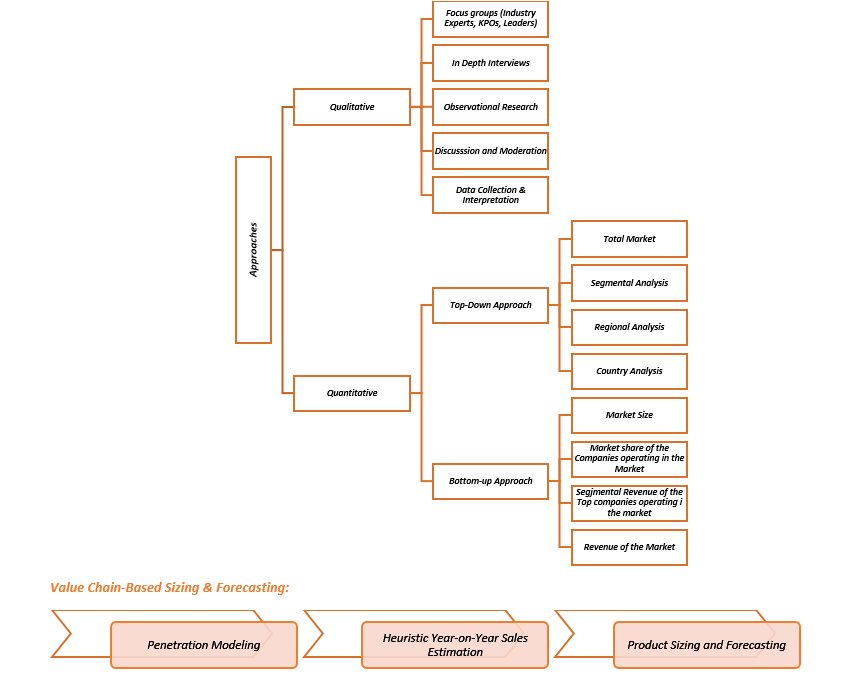
Consumer Behavior:
- Usage Rates and Patterns: Collect and analyze data on current product usage. It assists in product development and marketing strategies. Moreover, it also helps determine substitute rates.
- Market Penetration by User Base: Estimate the total market size and assess success in engaging potential consumers. Identify unmet needs and growth opportunities to enhance market penetration.
- Analyze market share, customer satisfaction, and preferences, providing insights into competitive positioning.
Historical/Empirical Data:
- Set initial figures to examine upcoming trends and to make well-informed decisions.
- Utilize exponential smoothing to forecast how a product might perform in the future, considering its trends and patterns over time.
Trend Analysis:
Conduct trend analysis using year-trending models to study historical data and identify patterns and trends that can influence future product penetration. This analysis aids in making proactive decisions and adapting strategies to capitalize on emerging opportunities and overcome challenges in the market.
Data Validation:
- Engage with in-house market analysts and industry experts to validate all collected data and cross-check it through calls or face-to-face interviews.
- Conduct thorough quality checks to validate the data included in the report and contact various members of our network to verify the data’s authenticity, resulting in error elimination and eradication of doubtful information.
- Correlate with standard KIPs to gain insights into future trends.
- Conduct multi-tier data validation through external thought leaders, market analysts, subject matter experts, comparative analysis, and review data collection instruments.
Continuous Monitoring: Final Report and Presentation
- Our team collaborates with industry experts to finalize and validate data. We utilize advanced data analysis models to generate valuable insights. Our integrated report comes with robust analytics and advanced visualization capabilities to ensure consistency and efficiency. We implement a standardized content management approach, common tagging, and taxonomy structure for seamless information connectivity. We offer comprehensive market and company views to facilitate easy and accurate comparisons. Our goal is to provide our clients with exceptional analytical resources for a competitive edge. We empower them to transform data into strategic insights for innovation and growth.
